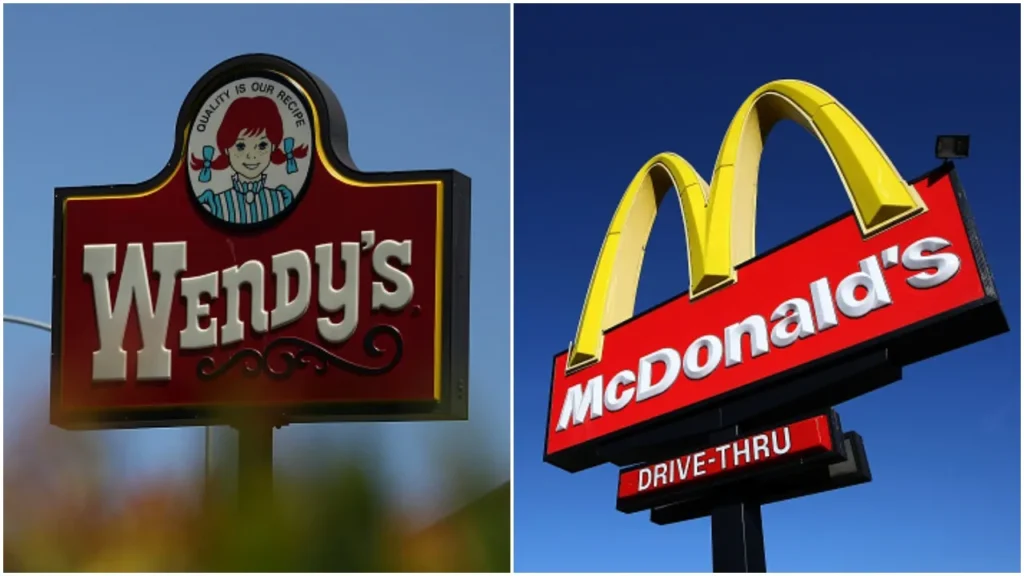For over three years, rapid inflation has significantly impacted consumers, making the search for affordable goods increasingly challenging. However, recent developments indicate that some relief might be on the horizon as several well-known companies, including Target, Ikea, Aldi, McDonald’s, and Wendy’s, have announced price reductions. This move is a response to the financial strain felt by shoppers and is aimed at attracting budget-conscious customers.
Target has been at the forefront of this initiative, lowering prices on 5,000 items such as frozen pizza and butter. Rick Gomez, an executive vice president at Target, acknowledged the pressures consumers face and reiterated the company’s commitment to helping them manage their budgets more effectively.
Economists explain that this series of price cuts is not merely a coincidence. Many companies are engaging in fierce competition to capture the attention of consumers who are more budget-conscious than ever. The competition is especially intense among businesses like fast-food chains and big-box stores, which cater primarily to low- and middle-income consumers. Jason Taylor, an economics professor at Central Michigan University, pointed out that after experiencing a dramatic reduction in their purchasing power, consumers are now prioritizing price above all other factors. This has led to a significant emphasis on price competition among firms.
In the fast-food sector, for instance, McDonald’s recently announced the introduction of a $5 value meal, which is set to be available in stores next month. Following McDonald’s lead, Wendy’s unveiled a $3 deal that includes a breakfast sandwich and potatoes. Aldi, a prominent grocery chain, also joined the effort by lowering prices on 250 items, including reducing the price of sirloin steak from $8.49 to $6.99. These price reductions reflect a broader trend among retailers and food chains to attract cost-conscious consumers by offering better deals.
These initiatives come at a crucial time, as many consumers are grappling with limited financial resources. The Federal Reserve, in response to accelerated price increases, has undertaken a series of aggressive interest rate hikes and has maintained these rates at their highest levels since 2001. Although inflation has decreased from its peak of about 9%, it remains over a percentage point higher than the Federal Reserve’s target rate of 2%. This persistent inflation, combined with high interest rates, has created a challenging economic environment for many consumers.
The impact of this economic situation is evident in the rising debt levels. In the first three months of 2024, U.S. household debt reached a record $12.44 trillion, an increase of $184 billion, or about 1.1%, according to the New York Federal Reserve. Additionally, credit card debt soared to a record high of $1.13 trillion at the end of the previous year. These figures highlight the financial strain on households, who are increasingly relying on debt to maintain their purchasing power amid rising costs.
Mark Zandi, chief economist at Moody’s Analytics, noted that these heavy debt burdens have made consumers more sensitive to price changes. This has intensified the pressure on companies to reduce prices in order to retain their customer base, particularly those businesses that cater to lower-income households. Zandi pointed out that price competition is heating up among businesses that serve these demographics, as lower-income households are under significant financial pressure.
Interestingly, many companies are in a position to lower prices without suffering significant losses. The surge in inflation following the COVID-19 pandemic led to a dramatic increase in corporate profitability. In 2021, corporate profit margins jumped from about 11% in the first quarter to 19% in the second quarter, eventually stabilizing at an elevated level of 15% over the following year, according to Federal Reserve data. This increase in profitability has provided companies with a cushion, enabling them to lower prices while still maintaining healthy profit margins.
Steve Hanke, a professor of applied economics at Johns Hopkins University, explained that high profit margins naturally attract competition, which in turn drives those margins down. This dynamic is evident as companies like Target, Aldi, McDonald’s, and Wendy’s adjust their prices to stay competitive. Hanke emphasized that no company is insulated from these market forces, which compel them to adapt their pricing strategies in response to competitive pressures.
Furthermore, Hanke suggested that the recent price cuts might indicate a positive outlook for inflation. The decision to lower prices reflects an expectation among business leaders that their input costs will not continue to rise rapidly. This could signal that the worst of the cost increases are behind us, offering a glimmer of hope for both businesses and consumers alike. The reduction in prices suggests that companies are confident that their costs will stabilize, which could help ease inflationary pressures moving forward.
In summary, the persistent inflation over the past three years has prompted significant price competition among companies, particularly those serving low- and middle-income consumers. Retailers like Target, Ikea, Aldi, McDonald’s, and Wendy’s have responded by lowering prices to attract budget-conscious shoppers. This trend is driven by the need to remain competitive in a market where consumers are prioritizing price due to financial pressures. The resulting price cuts may also signal a more optimistic outlook for inflation, as businesses anticipate more stable input costs in the future.
